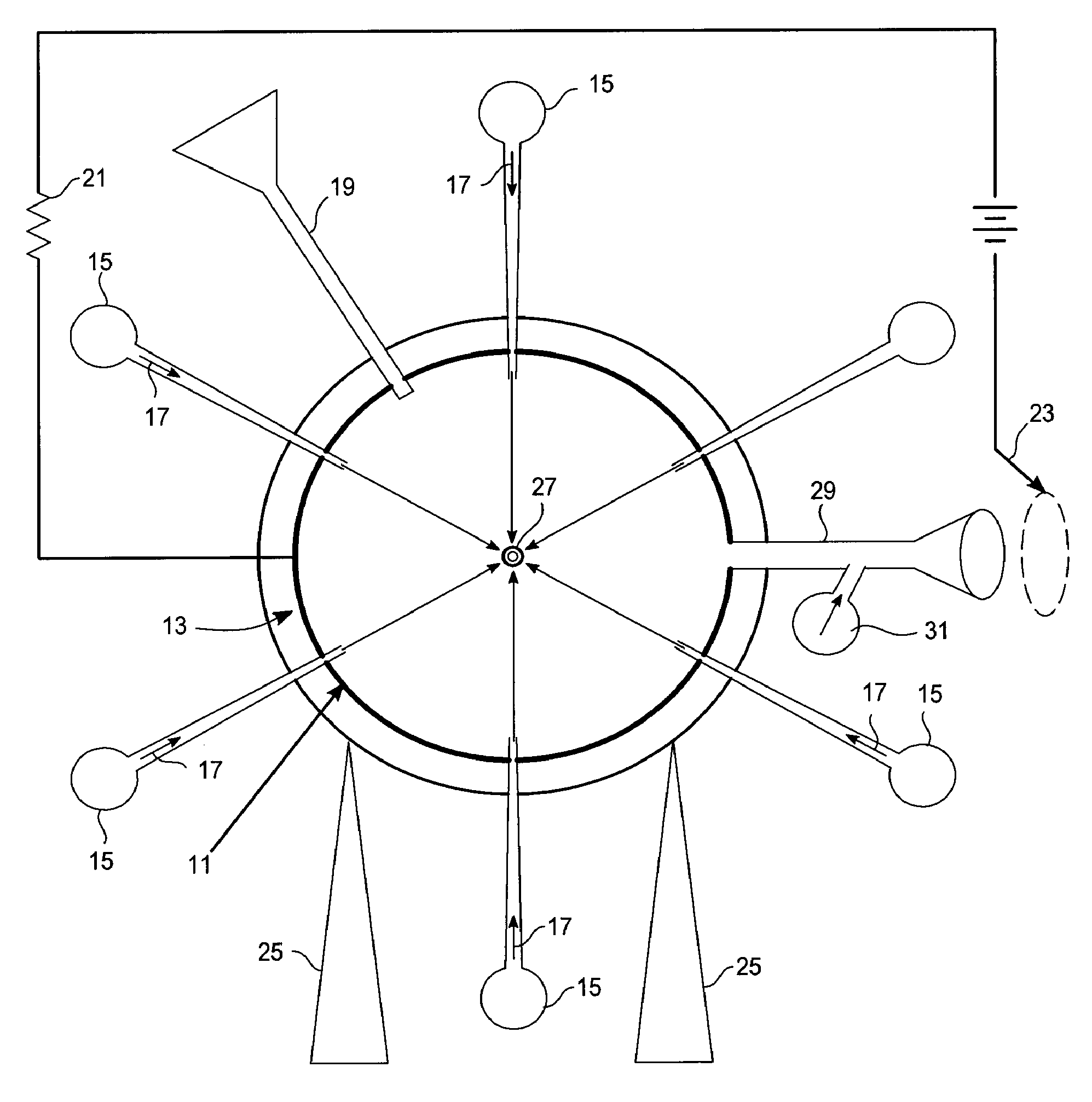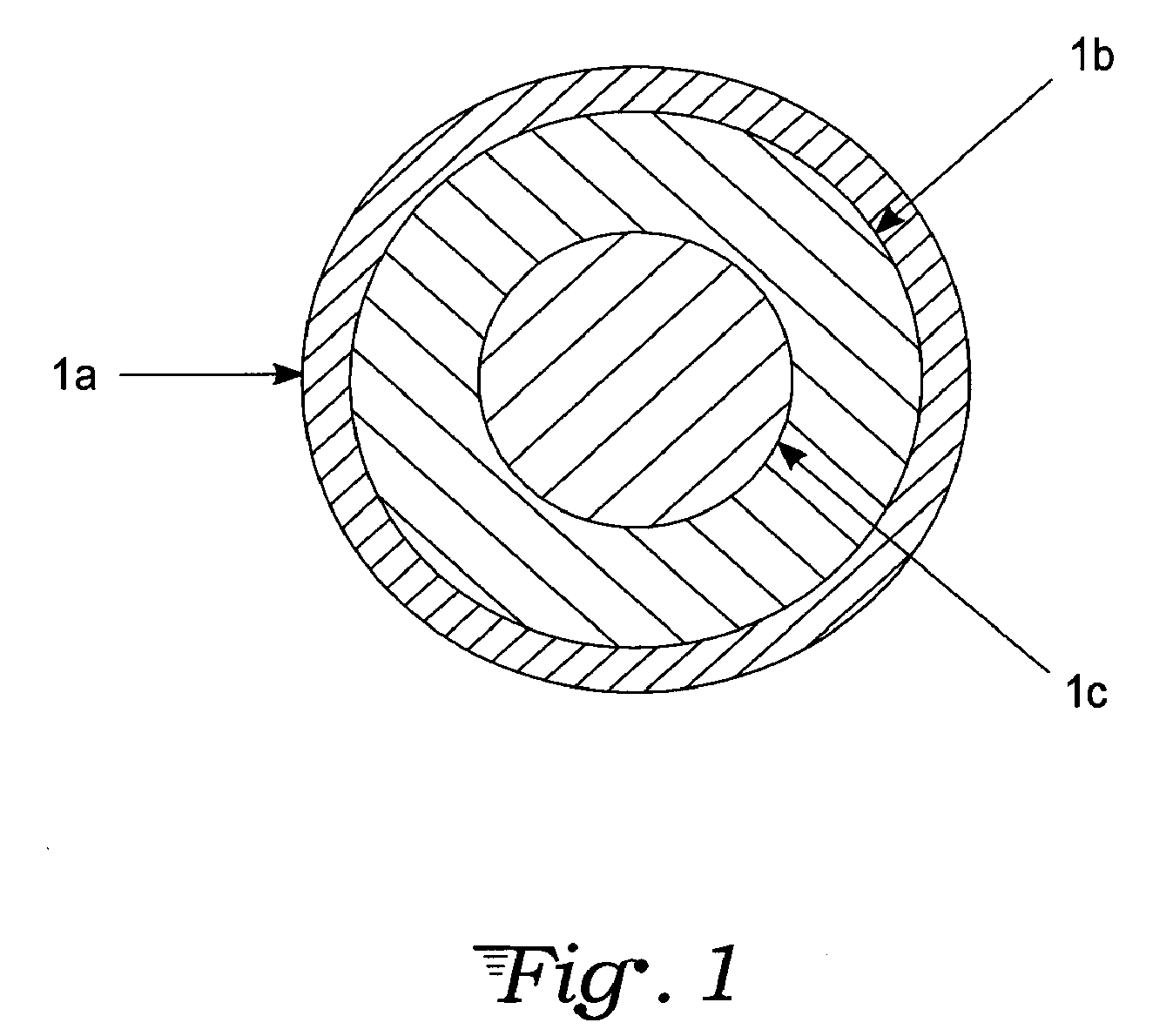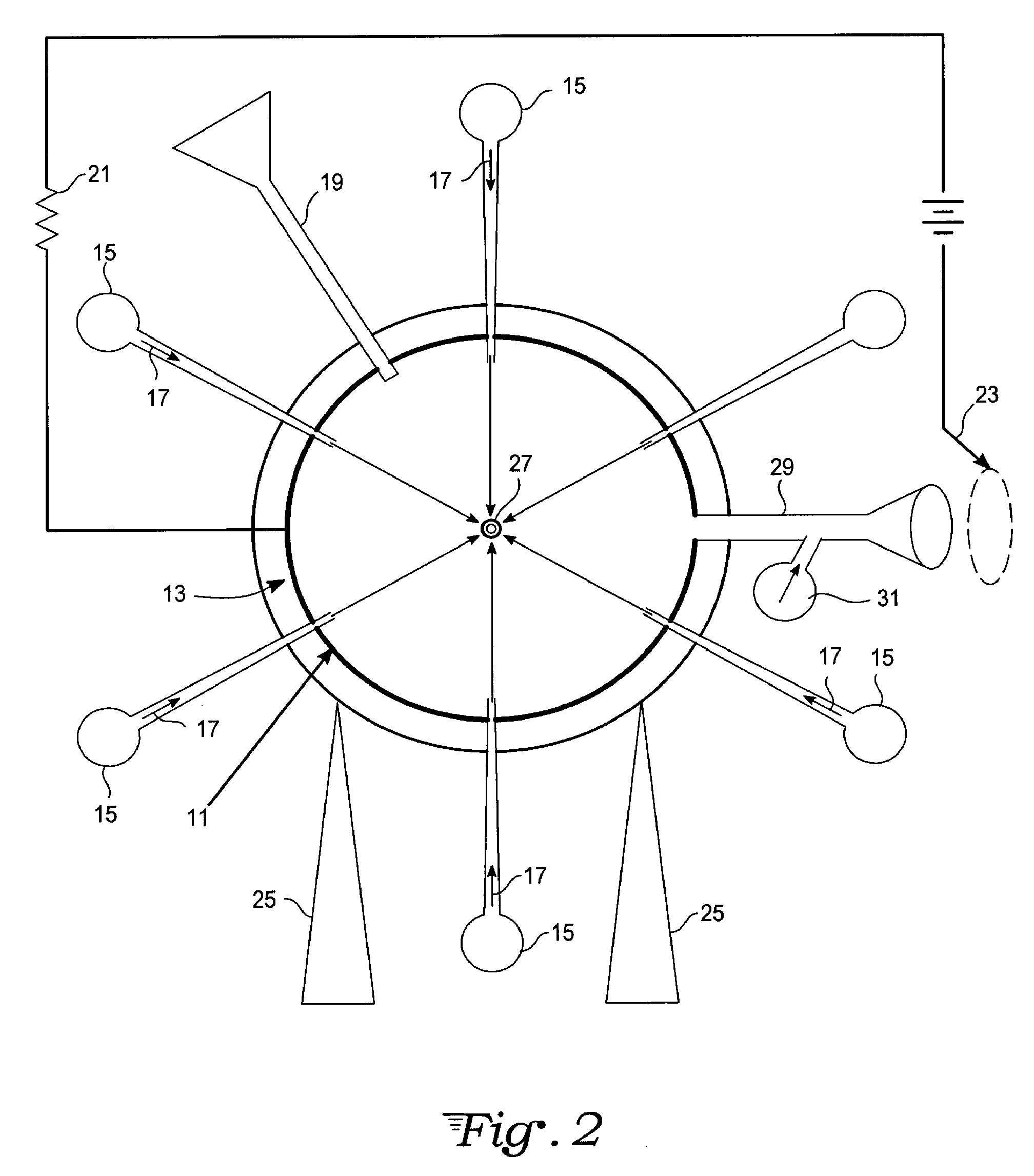Thermonuclear plasma reactor for rocket thrust and electrical generation
a plasma reactor and nuclear technology, applied in nuclear reactors, machines/engines, greenhouse gas reduction, etc., can solve the problems of limiting the principle of human space flight, chemical fuel is already near its theoretical maximum efficiency, and is barely able to get us off the planet, etc., to achieve the effect of reducing the working reaction, facilitating triggers, and creating more energy
- Summary
- Abstract
- Description
- Claims
- Application Information
AI Technical Summary
Benefits of technology
Problems solved by technology
Method used
Image
Examples
Embodiment Construction
[0020]With reference to FIG. 1, a fuel pellet for use in a plasma reactor in accord with the present invention may be a small multilayer bead (about the size of a grain of sand or rice) of concentric spheres including the following structural elements: a neutron-cascade-generating outer layer 1a, a solid fissile material under-layer 1b, and an optional fusion material core 1c.
[0021]The outer layer 1a may be composed of lead or beryllium and should be made porous. Lead or beryllium spins-off neutrons when struck by alpha particles. A porous structure will provide maximum surface area and allow deep saturation of the lead or beryllium by the alpha particles, inducing a maximum neutron flux. It also provides channels for the resulting neutrons to penetrate into the uranium layer, and further reflect and concentrate neutrons in the area of the inner layer. The porous physical structure might look like a natural sea-sponge, or perpendicular nanotubes like hair standing on end.
[0022]Ther...
PUM
 Login to View More
Login to View More Abstract
Description
Claims
Application Information
 Login to View More
Login to View More - R&D
- Intellectual Property
- Life Sciences
- Materials
- Tech Scout
- Unparalleled Data Quality
- Higher Quality Content
- 60% Fewer Hallucinations
Browse by: Latest US Patents, China's latest patents, Technical Efficacy Thesaurus, Application Domain, Technology Topic, Popular Technical Reports.
© 2025 PatSnap. All rights reserved.Legal|Privacy policy|Modern Slavery Act Transparency Statement|Sitemap|About US| Contact US: help@patsnap.com



